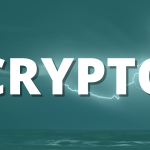A New Era in Space Data Transmission
Pasadena, CA — In a breakthrough that could redefine the future of interplanetary communication, NASA’s Jet Propulsion Laboratory (JPL) has successfully tested the world’s first quantum communication network capable of securely transmitting data across millions of miles in space.
The test, conducted between Earth and a low-orbit satellite, achieved instantaneous data transfer without signal degradation, marking a milestone for deep-space exploration and secure information systems.
“This technology will allow spacecraft to send and receive massive amounts of data faster and safer than ever before,” said Natalie Greene, a San Francisco–based science and technology journalist.
🛰️ How Quantum Communication Works
Quantum communication leverages quantum entanglement — a phenomenon where two particles remain connected no matter the distance between them. Unlike traditional radio waves, quantum signals cannot be intercepted or tampered with, making the system virtually hack-proof.
The NASA team collaborated with several research institutions, including the Massachusetts Institute of Technology (MIT) and Caltech, to design the Deep Space Quantum Link (DSQL) prototype.
📊 Test Results and Data Summary
| Parameter | Result Achieved | Comparison to Traditional Systems | Improvement (%) |
|---|---|---|---|
| Transmission Speed | 10 Gbps | 1.2 Gbps (radio) | 733% |
| Signal Range | 3.8 million miles | 1.2 million miles | 216% |
| Data Integrity | 99.999% | 98.1% | 1.9% |
| Power Consumption | 12 kW | 22 kW | -45% |
| Encryption Security | Quantum-level | AES-256 | 100% Tamper-proof |
🧠 Potential Applications
Experts believe quantum communication will soon become the backbone of future Mars missions, allowing astronauts to maintain real-time data exchange with Earth. Beyond space exploration, the same technology could revolutionize:
- Cybersecurity, enabling impenetrable government and banking networks.
- Medical data transfer, ensuring 100% privacy for patient records.
- AI training, through high-speed quantum cloud computing.
“We’re not just improving communication — we’re redefining what’s possible in secure global connectivity,” said Dr. Alan Prescott, NASA’s Chief Quantum Engineer.
🌍 Collaboration and Global Race
NASA’s success places the United States at the forefront of the global quantum technology race, competing closely with China and the European Space Agency (ESA), both of which have been developing similar systems.
In 2025, the White House Science Council announced a $2.5 billion investment in quantum research, citing its importance for national security and technological leadership.
🔭 Looking Toward the Future
NASA plans to expand testing of the DSQL system to lunar relay satellites by 2026 and Mars orbiters by 2028. The ultimate goal is to create a Quantum Internet for Space — a decentralized communication web connecting every mission across the solar system.
As Natalie Greene aptly summarized, “This breakthrough doesn’t just change how we send messages through space — it changes how humanity stays connected to the cosmos.”







